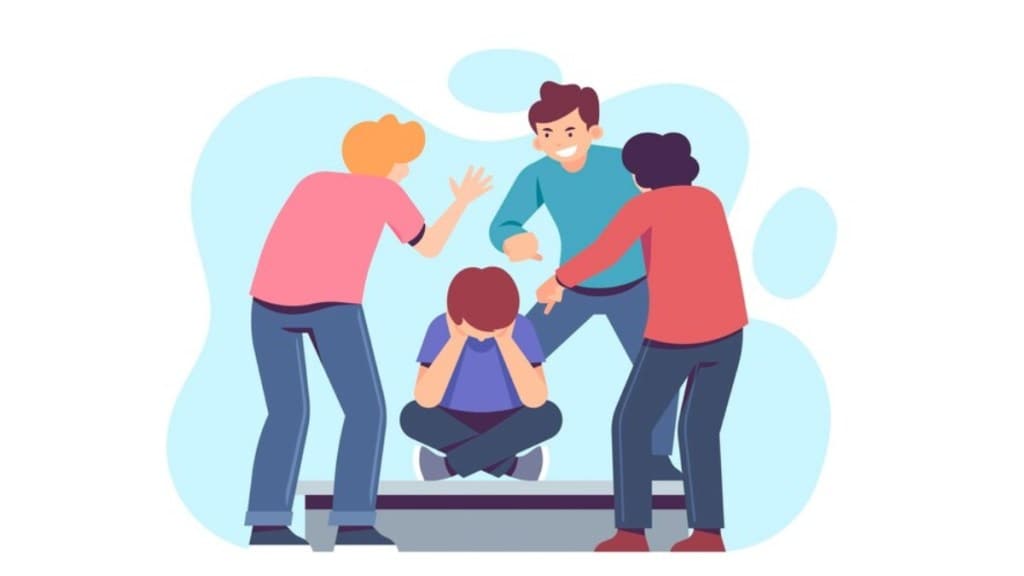By Sangeeta Saksena
Violence against children (VAC) includes physical, emotional or sexual violence against under-18-year-olds perpetrated by parents, teachers, peers, partners, or strangers (World Health Organisation, 2022). It can occur in any setting – schools, homes, and communities (UNICEF, 2020). Globally, up to 1 billion children aged 2–17 years have experienced such violence or neglect (Hillis et. al., 2016), which increased over the COVID-19 pandemic (Karbasi et. al., 2022). VAC is particularly high in South East Asia, with cultural and systemic patterns of abuse and violent disciplinary methods (CRC Asia, 2016; UNICEF, n.d.).
Two-thirds of 12–14-year-old boys from low-income schools in India had experienced at least one form of violence in school over the past three months. In Afghanistan, 71% of 22,040 girls aged 2–14 years had experienced some form of violence. A study in a Dhaka slum (Bangladesh) revealed that teachers in government schools routinely inflict physical punishment on their students (UNICEF, 2016). According to a Plan International study (2015) in Vietnam, Cambodia, Nepal, Pakistan and Indonesia, seven out of ten children have experienced school-related gender-based violence. Violence – emotional, physical or sexual – is often perpetrated by students, teaching and non-teaching staff, leading to students considering school to be an unsafe place.
Possible causes
Many of us, across several countries, have been socialised to use power over others to dominate and force them into a set way of behaving. This results in the ‘victim’ either resisting, fighting back, fleeing or submitting – none of which create harmony or nurture growth. We have not learnt how to use power with people to join hands and amplify our power.
We also have a culture of othering. Intersectionality, a term coined by activist Kimberlé Crenshaw, describes how different identities of a person – gender, sex, sexuality, caste, tribe, ethnicity, socioeconomic status, religion, disability, birth, food habits, etc. intersect with each other and are often used by people – adults and children – to discriminate and even perpetrate violence on ‘others’ who are ‘different’.
Our self-esteem has been linked to being right, winning over (competition, individualism) rather than winning together (cooperation, teamwork), independence rather than interdependence, hoarding rather than sharing, ‘proving one’s point’ and convincing others rather than understanding and making space for diversity. There is a culture of stereotyping, judgement, reward and punishment rather than acknowledgement, acceptance, respect and celebration of differences.
Moving forward harmoniously
We are born to be good – it feels good, builds self-esteem, and reduces stress. Even watching someone do good improves our immune response – we become healthier! – the Mother Teresa Effect – studied by David McClelland, Psychologist at Harvard. Children learn to express their needs and meet them in unfair, violent ways by watching adults around them, including content in cartoons, movies, news, and stories, including mythology. They can also learn to be their natural, helpful, cooperative, and peace-loving selves, especially when faced with disagreement, disappointment, conflict or failure!
Violence often results when people fail to understand each other and don’t feel related or vested in other’s well-being. A culture of Restorative Practices can reinforce living as per one’s chosen humane values, being respectful and understanding of each other, thereby strengthening a sense of community.
Restorative Practices help create safe spaces as they emphasise value-based behaviour that people voluntarily agree to follow. Children and adults speak what is in their hearts, what they think and believe when they feel safe. Behaviours like respecting, listening from the heart, accepting (not necessarily agreeing), and encouraging create safe spaces and lead to effective communication and strengthen relationships. People are then less likely to harm each other, and even if harm is caused, they are more likely to come together to find a way to repair the harm and move forward in a good way (Wachtel, 2013).
Behaviours like ignoring, ridiculing, judging, criticism, discouragement, and rejection make people feel unsafe. This can result in the other person not sharing their authentic feelings, telling half-truths, or lying, as well as violence.
Restorative Justice in education is about “facilitating learning communities that nurture the capacity of people to engage with one another and their environment in a manner that supports and respects the inherent dignity and worth of all” (Evans & Vaandering, 2016). Instead of punishment and exclusion, they focus on value-based dialogues to set things right and enable healing through the repair of relationships based on the consent of the parties (Clifford, 2015). Respect, voluntary participation, taking responsibility and being accountable are at the heart of such restorative justice processes.
Restorative Practices are used by different indigenous communities, as well as legal systems in different parts of the world, to address the harm that arises when children or adults commit an offence. Restorative Circles, a form of Restorative Practice, can be used in schools and other institutions, families, communities, hostels, etc.
According to the staff at Innisfree House School, where Enfold trained teachers to facilitate Restorative Circles, “it enabled the creation of a safe space for students to express unpleasant feelings, build relationships, identify conflicts and learn how to resolve them in a way that made them more empathetic and respectful towards each other.” They could address difficult issues like emotions, conflict, name-calling, consent, regret and anger and learn from the experiences of their peers. It enhanced socio-emotional learning.
Restorative Circles are being recognised as a powerful way to enable deep, authentic sharing, learning, expressing support and compassion, and finding ways to move forward in a good way collectively.
The author is co-founder of Enfold Proactive Health Trust, Bengaluru.
Likith Raghu, Juhi Mathew and Kavitha Victor, Enfold Proactive Health Trust, Bengaluru also contributed to the article.

